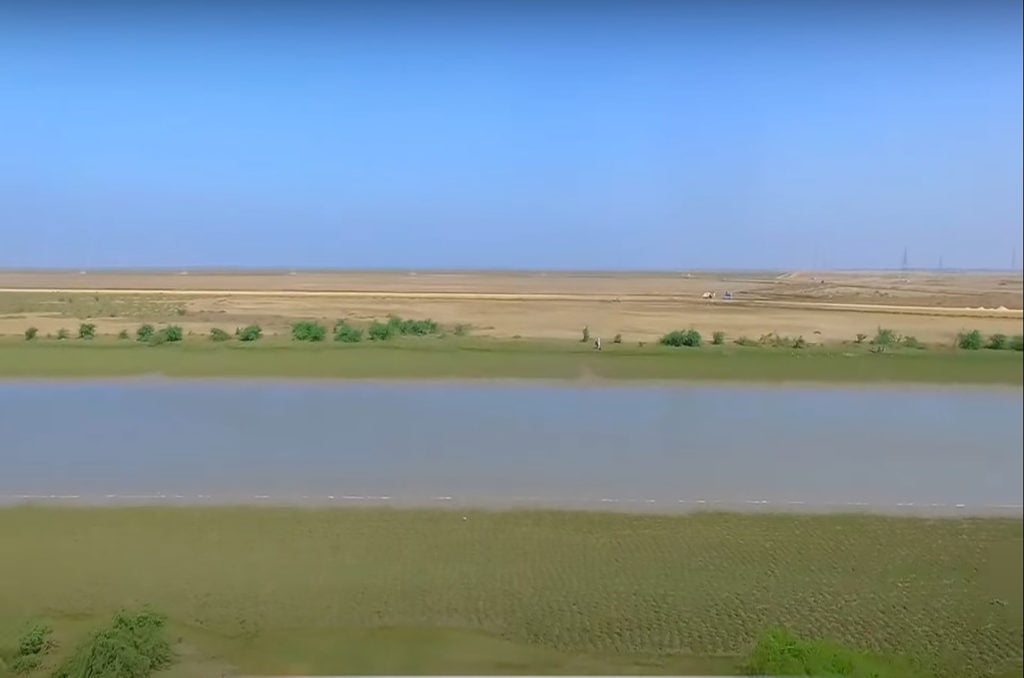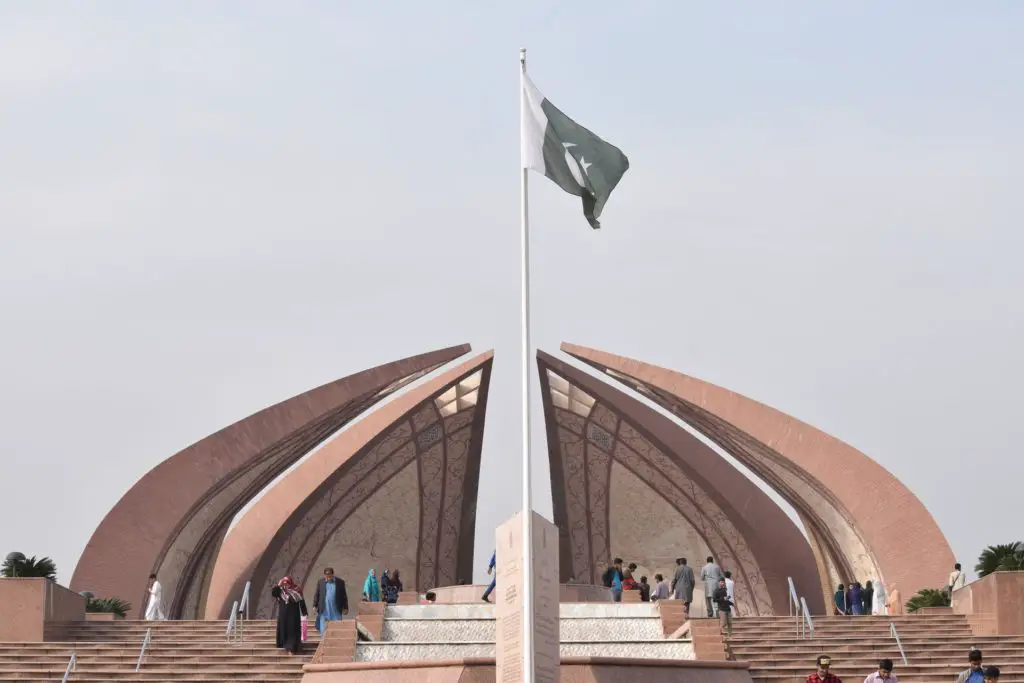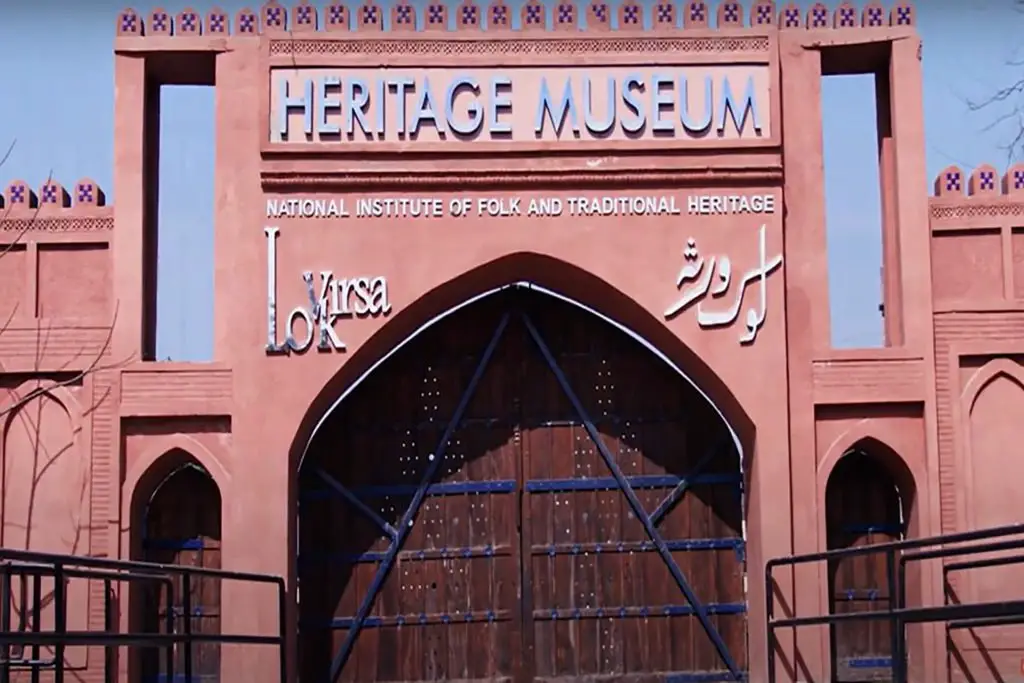Banbhore, Bambhore, Bhanbhore, or Bhambore is a city dating to the 1st century BCE located in present-day Sindh, Pakistan. The ruins of the city lie on the N-5 National Highway, east of Karachi. It dates from the Scytho-Parthian era and was later ruled by Muslims from the 8th to the 13th century, after which it was abandoned.
The remains of one of the oldest known mosques in the region from 727 AD are still preserved in the city. In 2004, the Department of Archeology and Museums Pakistan submitted the site for UNESCO World Heritage.
Location of Bhambore
Bhanbhore is located on the north bank of the Gharo Stream, about 65 kilometers (40 mi) east of Karachi in the Thatta district of Sindh, Pakistan. The ruins of the city are located on the N-5 National Highway between Dhabeji and Gharo.
History of Bhambore City
The city of Bhanbhore dates from the 1st century BC to the 13th century AD. The archaeological record reveals the remains of three distinct periods at the site: Scytho-Parthian (1st century BCE to 2nd century CE), Hindu-Buddhist (2nd century CE to 8th century CE), and early Islamic (8th century CE). 13th century AD). The city was gradually abandoned after the 13th century due to changes in the course of the Indus.
Some archaeologists and historians suggest that Bhanbhore is the historic city of Debal, which Arab general Muhammad bin Qasim conquered in 711–712 after defeating Raja Dahir, the last Hindu ruler of Sindh. However, this identification has not yet been confirmed, although numerous research and excavations have been carried out to link the two cities.
Preliminary excavations in the area were first carried out by Ramesh Chandra Majumdar in 1928 and later by Leslie Alcock in 1951. Pakistani archaeologist Dr. F. A. Khan conducted extensive studies and excavations at the site between 1958 and 1965. In March 2012, the Sindh Department of Culture organized the first international conference on Bhanbhore where various experts and archaeologists presented their research on the site.
Bhanbhore may have been known to the Greeks and over the centuries as Barbari or Barbaricon, but it has not yet been proven that these historical cities are the same.
Ruins of Bhambore
Archaeological findings show that the city consisted of an enclosed area surrounded by a stone and mud wall. The citadel was divided into eastern and western parts by a fortified stone wall in the middle. The eastern part contains the ruins of a mosque with an inscription dated 727 CE, sixteen years after the conquest of Sindh, indicating the best-preserved example of the oldest mosques in the region.
The remains of the mosque were discovered in 1960. Remains of houses, streets, and other buildings were found inside and outside the citadel. Contemporary stone buildings from three periods have also been uncovered in the area, including a palatial stone building with a semi-circular shape, a Shiva temple from the Hindu period, and a mosque. Three gates to the citadel were also uncovered during the excavations.
The ancient city of Bhanbore, associated with the story of Sassui Punhun, which was immortalized in the poetry of Shah Abdul Latif Bhittai, was located 37 miles north of Karachi near Gharo. The 10th-century capital of Bhambo Raja reached the height of its glory as the most important crossroads of the ancient trade route to China and the Middle East.
Bhambore Love Story
Bhambore is believed to have been destroyed around 1250, but it still lives on in the world of romance and folklore. The tomb of Sassui lies at a place known as ‘Sassui Waro’, 14 miles from Karachi on the way to Kech Makran.
The story of Sassi Punnun owes its origin to the Soomra period (1024-1351 AD), which is known as the period of chivalry and romance. Through the Bhats and Charans, this story spread far and wide. The first documented source mentioning Bhambore is found in the poetry of Shah Abdul Latif Bhitai’s grandfather Shah Abdul Karim Bulri (1536-1623 AD) who, while narrating the story ‘Sussui – Punhun‘, says:
Sussui says: “When I came out of Bhambore and cried out, if my beloved had heard my lamentations, he would not have left me.”
Surprisingly, there is no factual evidence to prove whether the city existed or is just a romantic fantasy in literature
After Shah Abdul Karim, many references to this city can be traced in Sindh literature. Mir Muhammad Masum Bakhari (d. 1606 CE), the great historian and poet of Sindh, also narrated this story under the title Masnawi Husn-o-na’az in Persian sometime around 1594 CE.
Besides, Mian Shah Inayat (d. 1719 AD) and Shah Abdul Latif Bhitai (d. 1752 AD) also narrate the famous Sussui-Punhun folklore in their poetry using various variations in the spelling and pronunciation of Bhambore such as “Bhombore” or “Banbhore”, which are still used by the people of Sindh.
However, the origin and history of Bhambore are mostly unclear and its location is controversial. For example, David Ross thought the ruins of Bhambore were “Deebal”. Sir Henry George Elliot and Alexander Cunningham regard it as the ancient ‘Barbarican’, which, according to Maris Erythraea, author of the Periplus, was a seaport in the delta in the time of Alexander (c. 324 BC).
At Bhambore there are ruins of great antiquity, comprising ramparts, bastions, towers, and houses, showing at once a large population and traces,” wrote David Ross in his book, Land of Five Rivers and Sindh: Sketches Historical. and Descriptive when he first saw the place in the 19th century AD.
Henry Cousens, in Antiquities of Sind, says: “It is considered by the natives of Sindh to be the oldest port of the province.” And that he himself would regard it as the port of Alexander’s days. Despite the fact that there is no factual evidence to prove whether the town of Bhambore actually existed or is just a fantasy.
No one could find any trace of the place or its name from any authentic historical source. It is possible that this city existed at an earlier time and was adopted into folklore later, but this conception has no solid support.
According to Sindhi folklore, the story of Sussui-Punhun is associated with a region that extends from the Kuch Valley to southern Sindh. The area is generally considered to be part of the old trade route to Iraq, on which Bhambore appears to lie 37 miles south-east of Karachi. There are three reasons that support this assumption.
First, the Bhambore ruins are located on the old course of the Indus River; secondly, in the northwest of the ruins are the quarters of the dying textile workers, which are associated with the story of Sussui-Punhun; and thirdly, Sussui took this route in search of Punhun after he was abducted by her brothers, and the place where her monument was erected is in the north-west of Karachi.
Doctor N.A. Baloch, who has done extensive research on the subject, argues that in the name “Bhambore” there appears to be a compelling philological clue to the name of an old Buddhist temple at Deebal, namely (Bhanmbor = Ban-Bahar) Vana -Vihara, which was probably the name of a Buddhist temple which stood on this site, which should be Deebal.
Buddhist temples are known as “Viharas” and in the Fathnama-i-Sindh alias Chachnama (c. 1216 CE), the earliest historical source on Sindh, we get the names of some other Buddhist temples in Sindh at the time of the Arab conquest. Accounts of Debal speak of a temple that stood approximately 14 yards high.
At Bhambore, high up on the hill, are some old foundations of walls eight to 10 feet wide with bastions. This high platform may have been the site of a temple and later a mosque for which Bhambore is largely known.
Bhambore, which is now 35 km from the open sea, is believed to have been only 20 km from the sea in the 13th century, and when Alexander came here in 324 BC it was probably on the sea itself or a mile or two inland the Kalri branch of the Indus. The ancient fort existed long before the Arab Conquest, but was regularly repaired.
The sandstone used for its construction and also for the houses came from the hills just outside the settlement, but the clay bricks were used for the poor men’s quarters and for the fortifications of the core. The settlement occupies about 55 acres, although only 10 percent of the visible area has been excavated and not much can be known about the life of the common man.
As there is a mystery about the origin of this city, it has the same controversy about its end. No authentic and final conclusion has yet been made about its destruction.
There are many versions of the destruction of this ancient city. Some believe that there was a great change in the course of the Indus River and the city that was located on the banks of the river was abandoned. Another reason given is that the city came to an abrupt end after a violent earthquake around 1250 AD.
Some historians believe that the city was set on fire in the event of a civil war or foreign invasion. Another account says that the destruction of Bhambore may have been caused when during the mid-13th century AD, Jalal al-Din Khwarzim Shah invaded Sindh and devastated and conquered many coastal areas of Sindh.








